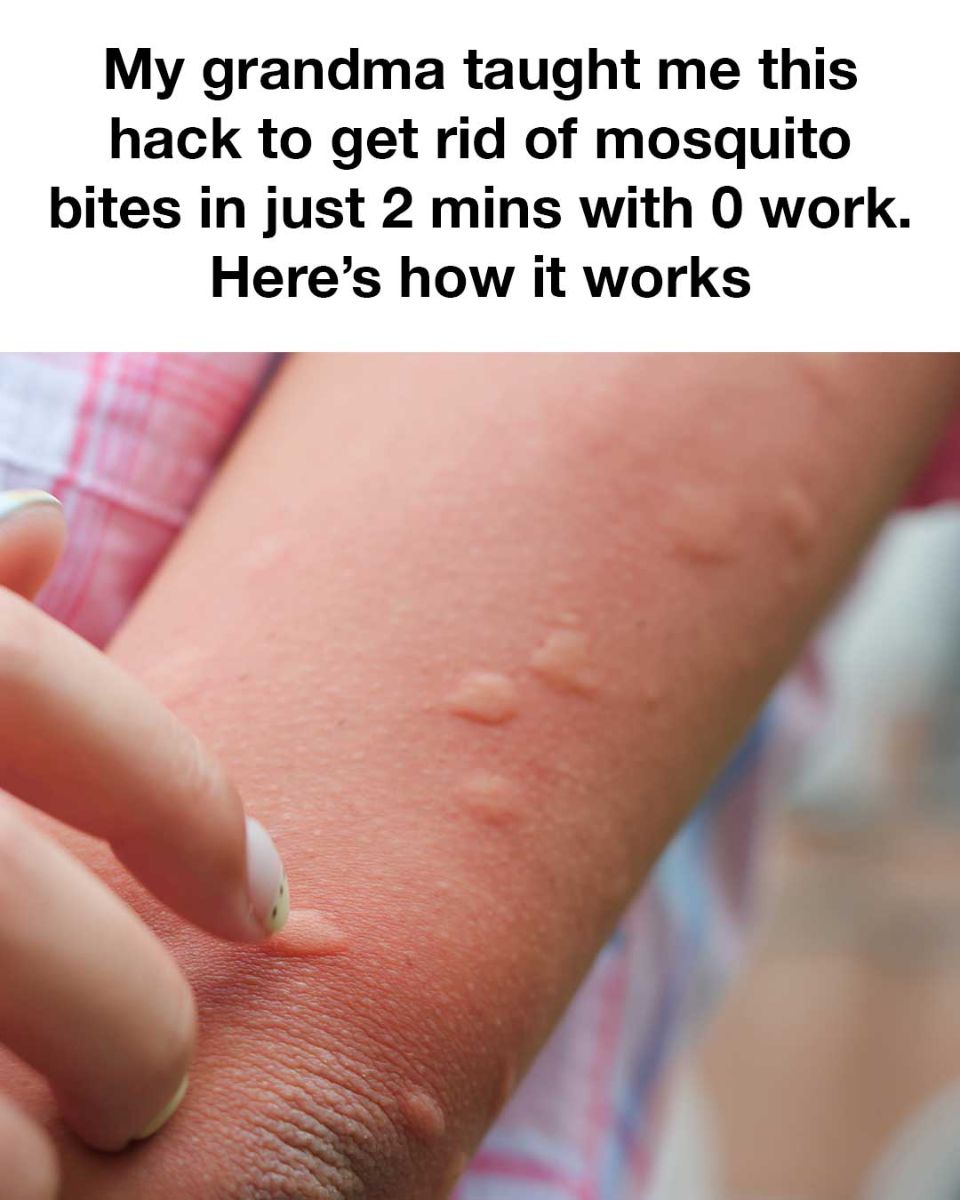Mosquito bites are an all-too-familiar irritation, especially during the warmer months when spending time outside is at its peak. Despite their tiny size, mosquitoes pack a punch with their bites, leaving behind itchy, red bumps that can quickly turn a relaxing evening into a scratch-filled ordeal. Over the years, people have tried everything from medicated creams and ice packs to natural remedies like aloe vera in search of relief. But did you know that a simple metal spoon might be your secret weapon against mosquito bites?
Let’s dive into this surprisingly effective home remedy and explore why heating a spoon could be your new go-to itch relief method.

The Itch We All Dread
When a mosquito bites you, it injects a small amount of saliva into your skin. This saliva contains proteins that prevent your blood from clotting while the mosquito feeds. Unfortunately, these proteins trigger an immune reaction in your body, leading to inflammation, redness, and the all-too-familiar itching sensation. For some people, especially those sensitive to mosquito saliva, the reaction can be severe, with large welts or even hives that last for days.
The problem with mosquito bites isn’t just the itching—scratching can break the skin and lead to infections, making a small annoyance a bigger issue. That’s why finding fast and safe relief is so important.
Introducing the Spoon Trick
Enter the spoon remedy—a straightforward technique that has taken many by surprise. All you need is a metal spoon and hot water. By heating the spoon and gently pressing it against the bite, you can actually neutralize the proteins left behind by the mosquito. That means less itching, less swelling, and a whole lot more comfort.
This trick was discovered by people who noticed that applying heat helped reduce itching. The science behind it is simple: heat denatures (or breaks down) the proteins in the mosquito saliva, making them less irritating to your body.
The Science of Heat and Relief
So how exactly does this work? When you apply heat to the bite area, the proteins injected by the mosquito lose their structure and become ineffective. This means the immune system no longer reacts to them, and the itching and swelling begin to subside. In addition to breaking down those proteins, heat also increases blood flow to the area, which can help your body heal more quickly.
How to Use the Spoon Remedy
Ready to try it out? Here’s a quick step-by-step guide:
-
Boil some water and pour it into a cup or bowl.
-
Drop a clean metal spoon into the hot water and let it sit for about a minute.
-
Carefully remove the spoon and test it against your wrist to ensure it’s hot but not burning.
-
Gently press the back of the spoon onto the mosquito bite for about 30 seconds.
-
Repeat as needed, but never apply heat to broken or overly sensitive skin.
It’s a simple, cost-effective method that requires no special products—just something already in your kitchen drawer.
Why It’s So Effective
Compared to creams and ointments that take time to work, the spoon remedy provides nearly instant relief. It’s a chemical-free solution, which is ideal for those with sensitive skin or people who prefer natural remedies. Plus, it doesn’t require a trip to the store—perfect for those moments when a bite sneaks up on you at home or while traveling.
How It Stacks Up Against Other Remedies
You’ve probably tried hydrocortisone creams, antihistamines, aloe vera, or even baking soda pastes. These can be helpful, but they often take time and may not always be readily available. The spoon remedy works fast, doesn’t rely on pharmaceuticals, and is accessible anywhere you have hot water and a spoon. That’s hard to beat.
Safety First
While the spoon method is safe for most people, you should always use caution with anything involving heat:
-
Always test the spoon’s temperature before applying it to your skin.
-
Avoid using it on broken or highly sensitive skin.
-
Don’t leave the spoon in place for too long—30 seconds is usually enough.
-
If you notice redness, burning, or discomfort, stop immediately.
Used correctly, this method is both safe and soothing.
Other Natural Solutions
If the spoon trick isn’t your thing or you want to combine it with other approaches, there are plenty of alternatives:
-
A baking soda and water paste can help neutralize the skin’s pH.
-
Aloe vera soothes and cools inflamed skin.
-
Apple cider vinegar may reduce itching thanks to its acidity.
-
Ice packs can numb the area and reduce swelling.
Everyone’s skin reacts differently, so experiment to see what works best for you.
Avoiding the Bite Altogether
Of course, the best solution is to avoid getting bitten in the first place. Here are some preventive tips:
-
Use bug sprays with DEET, picaridin, or lemon eucalyptus oil.
-
Wear long sleeves and pants when outdoors, especially at dawn or dusk.
-
Use window and door screens to keep mosquitoes out of your home.
-
Get rid of standing water around your house, where mosquitoes breed.
Prevention goes a long way in keeping those itchy welts at bay.
Understanding the Itch
To fully appreciate how remedies like the spoon trick work, it helps to understand the biology behind the itch. When a mosquito injects saliva, your immune system kicks in, releasing histamines that increase blood flow and cause inflammation. That’s why you feel itchy, red, and swollen. Targeting the cause—those foreign proteins—with heat offers a direct way to stop the process.
Real People, Real Results
This method isn’t just theoretical—people all over the world swear by it. Sarah, a mom of two, discovered the trick during a camping trip. With no creams on hand, she tried the spoon method and was shocked at how quickly her kids stopped scratching. Tom, a gardener who spends hours outdoors, says it’s the fastest and most reliable solution he’s tried, and it’s saved him from a summer full of discomfort.
Final Thoughts
Mosquito bites don’t have to ruin your day—or your night. The spoon remedy offers a fast, simple, and natural way to get relief without reaching for chemicals. Next time you find yourself itching, skip the pharmacy and head to the kitchen instead. Sometimes, the best solutions really are the simplest.





